Awais Ahmed
Timestamp-Supervised Action Segmentation with Graph Convolutional Networks
Jun 30, 2022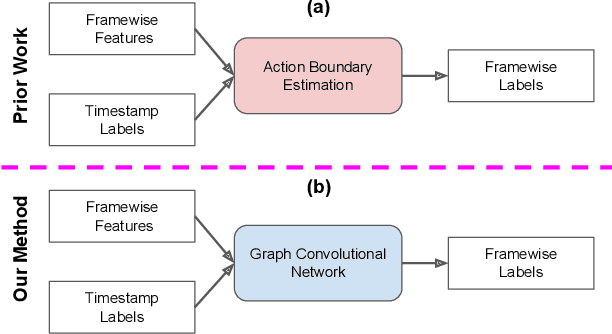
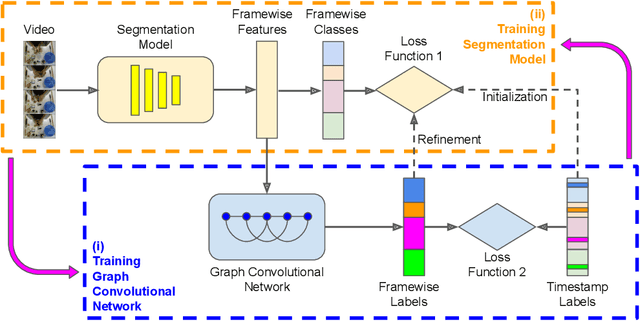
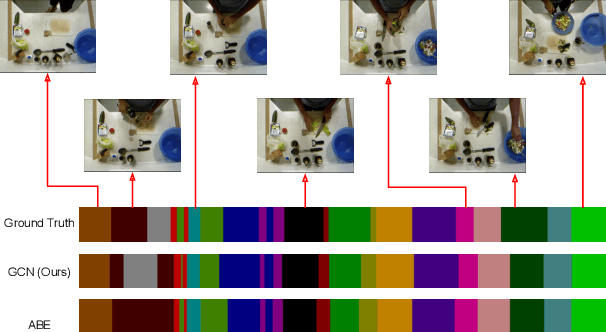
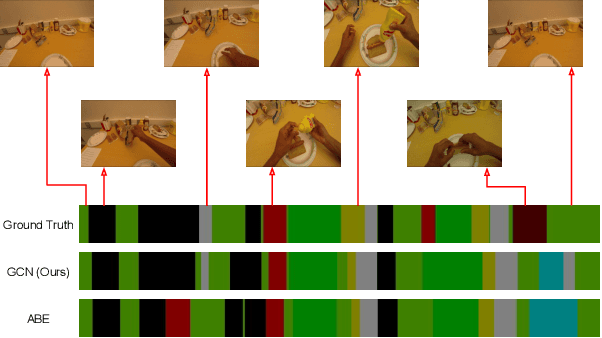
Abstract:We introduce a novel approach for temporal activity segmentation with timestamp supervision. Our main contribution is a graph convolutional network, which is learned in an end-to-end manner to exploit both frame features and connections between neighboring frames to generate dense framewise labels from sparse timestamp labels. The generated dense framewise labels can then be used to train the segmentation model. In addition, we propose a framework for alternating learning of both the segmentation model and the graph convolutional model, which first initializes and then iteratively refines the learned models. Detailed experiments on four public datasets, including 50 Salads, GTEA, Breakfast, and Desktop Assembly, show that our method is superior to the multi-layer perceptron baseline, while performing on par with or better than the state of the art in temporal activity segmentation with timestamp supervision.
Unsupervised Activity Segmentation by Joint Representation Learning and Online Clustering
May 28, 2021
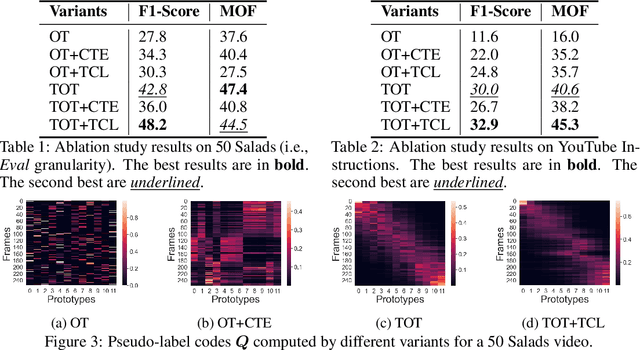
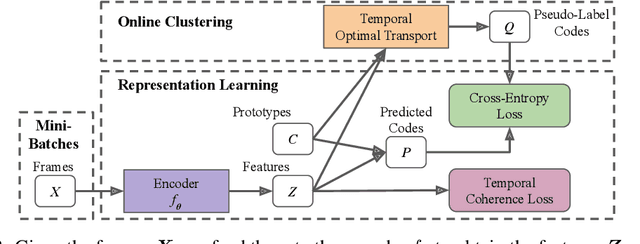
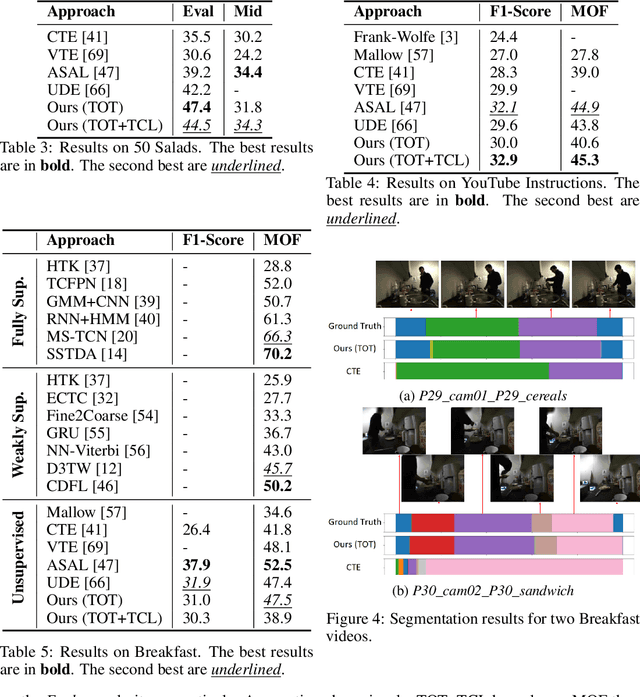
Abstract:We present a novel approach for unsupervised activity segmentation, which uses video frame clustering as a pretext task and simultaneously performs representation learning and online clustering. This is in contrast with prior works where representation learning and clustering are often performed sequentially. We leverage temporal information in videos by employing temporal optimal transport and temporal coherence loss. In particular, we incorporate a temporal regularization term into the standard optimal transport module, which preserves the temporal order of the activity, yielding the temporal optimal transport module for computing pseudo-label cluster assignments. Next, the temporal coherence loss encourages neighboring video frames to be mapped to nearby points while distant video frames are mapped to farther away points in the embedding space. The combination of these two components results in effective representations for unsupervised activity segmentation. Furthermore, previous methods require storing learned features for the entire dataset before clustering them in an offline manner, whereas our approach processes one mini-batch at a time in an online manner. Extensive evaluations on three public datasets, i.e. 50-Salads, YouTube Instructions, and Breakfast, and our dataset, i.e., Desktop Assembly, show that our approach performs on par or better than previous methods for unsupervised activity segmentation, despite having significantly less memory constraints.
Machine Learning and Data Science approach towards trend and predictors analysis of CDC Mortality Data for the USA
Sep 11, 2020

Abstract:The research on mortality is an active area of research for any country where the conclusions are driven from the provided data and conditions. The domain knowledge is an essential but not a mandatory skill (though some knowledge is still required) in order to derive conclusions based on data intuition using machine learning and data science practices. The purpose of conducting this project was to derive conclusions based on the statistics from the provided dataset and predict label(s) of the dataset using supervised or unsupervised learning algorithms. The study concluded (based on a sample) life expectancy regardless of gender, and their central tendencies; Marital status of the people also affected how frequent deaths were for each of them. The study also helped in finding out that due to more categorical and numerical data, anomaly detection or under-sampling could be a viable solution since there are possibilities of more class labels than the other(s). The study shows that machine learning predictions aren't as viable for the data as it might be apparent.
An Intelligent and Time-Efficient DDoS Identification Framework for Real-Time Enterprise Networks SAD-F: Spark Based Anomaly Detection Framework
Feb 14, 2020



Abstract:Anomaly detection is a crucial step for preventing malicious activities in the network and keeping resources available all the time for legitimate users. It is noticed from various studies that classical anomaly detectors work well with small and sampled data, but the chances of failures increase with real-time (non-sampled data) traffic data. In this paper, we will be exploring security analytic techniques for DDoS anomaly detection using different machine learning techniques. In this paper, we are proposing a novel approach which deals with real traffic as input to the system. Further, we study and compare the performance factor of our proposed framework on three different testbeds including normal commodity hardware, low-end system, and high-end system. Hardware details of testbeds are discussed in the respective section. Further in this paper, we investigate the performance of the classifiers in (near) real-time detection of anomalies attacks. This study also focused on the feature selection process that is as important for the anomaly detection process as it is for general modeling problems. Several techniques have been studied for feature selection and it is observed that proper feature selection can increase performance in terms of model's execution time - which totally depends upon the traffic file or traffic capturing process.
 Add to Chrome
Add to Chrome Add to Firefox
Add to Firefox Add to Edge
Add to Edge